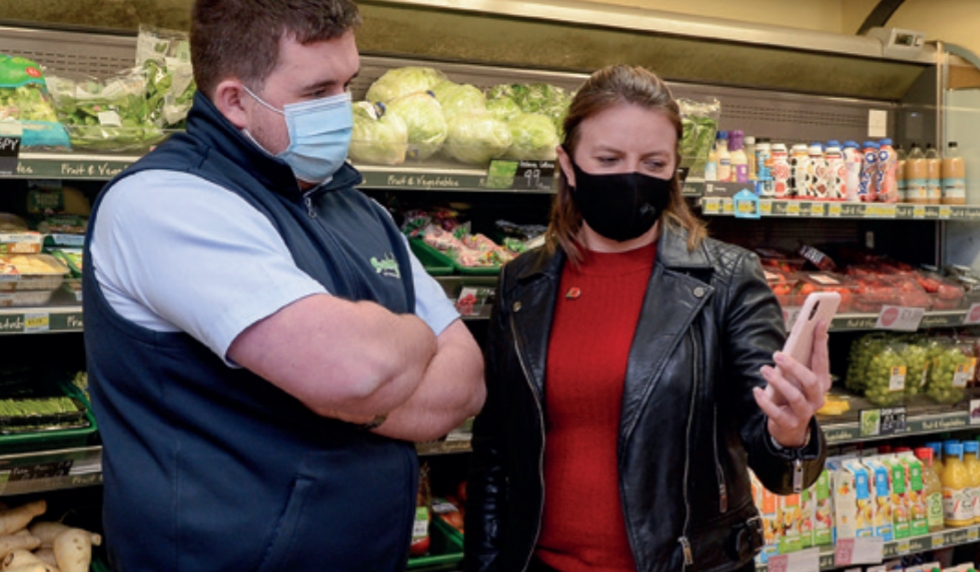Running a more sustainable business is now an important part of retailing. In fact, it’s become vital to stand out to your shoppers as a store that does its best to minimise its effect on the environment.
Doing so can be simple, such as reducing the amount of packaging you use, being creative with products nearing their sell-by date to avoid wasting them or installing doors on your chillers.

The Matthews family opened Bradley’s Supermarket in 1976, but next year will be 100 years of the family being in retail and to mark the occasion, the store will be undergoing its biggest refit to date.
Jack has made great strides in improving his sustainability in store, such as reducing his waste to 3% but as part of the refit, he wants to make the shop as energy efficient as possible.
How can the IAA and Ruth Forbes from JTI help?

Why I take part
We’re in the final stages of planning a full refit in January 2021 and we want to make the store as sustainable as possible, so today’s visit is a good opportunity to get ideas on how to improve.
Ruth’s advice was really insightful but also practical and along similar lines to some of the ideas we’ve had so I’m feeling good about taking it forward and seeing some strong results from following the action plan.
IAA advice
Limiting packaging and using plastic alternatives

Jack’s fruit and veg are already loose on the shelf which has generated positive customer feedback.
Jack wants to limit packaging in other categories but isn’t sure where to start. What can he do?
Ruth says: “Shoppers are becoming increasingly environmentally conscious, so reducing plastic and offering loose products is a good way to help them to do their bit.
“By asking your customers about the products they’d like to see in recyclable packaging or loose so they can use their own, you will ensure a positive reaction, meaning sales are maintained, while improving your carbon footprint.”
ACTION ➜ Ask customers in store and online about which products they’d like to see sold loose
Lowering your store’s carbon footprint

Jack uses LED lighting and plans to install doors on his chillers as part of his refit but wants to ensure his store is as energy efficient as possible.
What else can he do to lower his carbon footprint?
Ruth says: “It’s fantastic that you’re planning to upgrade your lighting and install chillers with doors as this will minimise your impact on the environment and bills.
“The next step would be to review energy efficiency levels and install light sensors or introduce a ‘switch off’ policy in areas that aren’t in constant use, such as your stock room, to further reduce energy use.”
ACTION ➜ Review energy efficiency and look into introducing light sensors or a ‘switch off’ policy to further reduce energy use
Working with suppliers to sell more products loose in store

Jack has noticed a shift in household buying habits, with many moving towards more sustainable options. Jack has tried this in the past without much success.
How can he sell more loose goods and remain competitive?
Ruth says: “You’ve got a strong household range, which customers rely on throughout the week. But as customers make conscious efforts to be more sustainable, offering refill options is key.
“Working with suppliers to get the right offer on refillable products will enable you to remain competitive while helping you stand out and become more sustainable in the long term.”
Check our follow up of Jack’s store
ACTION ➜ Work with suppliers to find competitively priced household products that are more sustainable

How to cut energy costs in your store and save money
Read more news and advice on sustainable retail













Comments
This article doesn't have any comments yet, be the first!